When a prospective customer searches for your business online, how easy is it for them to find you?
Every month, thousands (or tens of thousands, in larger cities) of prospective customers search using Google to find local businesses offering everything from specific products to professional services, medical care and more.
Optimising for these local search results is called local SEO, and it’s one of the most effective and profitable ways for your business to put itself in front of qualified, interested inbound leads.
Just like Google’s Panda and Penguin updates shook up the large-scale SEO world over the past few years and changed many “rules” of SEO, recent changes to the way Google ranks local businesses have changed some of the factors involved in local SEO.
In 2014, Google changed the way it ranked local businesses in an update that’s been dubbed Pigeon. Authoritative websites like Yelp and TripAdvisor moved up in the rankings, and local sites that abused unnatural links and poor on-site content shifted downwards sharply.
Despite the changes to the way Google ranks local businesses, local SEO is still an excellent way to generate highly relevant inbound leads for your business. In fact, businesses that focus on relevance and quality have actually benefited since Google’s 2014 algorithm update.
Would you like to start generating leads for your local business using search? Below, we’ve put together an actionable, step-by-step guide to local SEO in 2016 for local businesses interested in generating more local leads from Google’s organic search results.
First, how has the local search ecosystem changed?
One of the biggest changes of Google’s Pigeon update is that local search has become even more local. Neil Patel has noted that one of the effects of the update was to give greater weight to local businesses that have neighbourhood-focused keywords.
This means that optimising for a keyword like “harrow dentist”, which has a much lower search volume than “london dentist” but greater localisation factor, is more likely to give your business the visibility it’s seeking. The more local you can get, the better it is for your search visibility.
The Pigeon update also increased the visibility of large review and directory websites like Yelp and TripAdvisor. Yelp, which had previously complained about Google’s ranking factors, saw a massive increase in visibility for a range of local keywords.
Finally, in late 2015, Google switched from showing seven listings in its “local pack” to showing only the top three local results.
If you’re a local business owner, the recent changes to the local search ecosystem mean three things:
- More than ever before, it’s important to focus on optimising for your local neighbourhood or area, even if it’s a smaller market than the general metropolitan area your business serves.
- Local directories like Yelp and TripAdvisor are much more visible and drive more local traffic than before, making positive reviews and an enthusiastic customer presence an even more important aspect of generating local search leads.
- Since there are only three pack listings instead of seven, it’s important to dominate your local area’s search results, even if it means scaling down the overall scope of your local SEO campaign.
Ready to start optimising? Now that you’re up to date with the reality of local SEO in 2016, let’s take a look at the practical side of optimising your website for local search.
Establishing a consistent name, address and phone number
The first step in optimising your website for local SEO is making sure your name, address and phone number are consistent across all of your profiles and directory listings.
Have you ever Googled for a local business you knew was open and operational, only to have Google tell you it had shut down or moved to a new address? Or have you tried calling a local business using a phone number you found online, only to have it return no answer?
Google’s goal with local search is to provide the most relevant, useful results to searchers. If your business has out-of-date or inconsistent local directory listings or Google My Business data, it becomes far less of a relevant, useful search result.
First, if you’re starting a local SEO campaign for a brand new business, make sure you submit it to Google My Business. Google My Business gives your local business a Google+, Search and Maps listing, establishing it as a relevant local business that belongs in the local search results.
Second, make sure your name, address and phone number are correct and consistent across all local directories you’re listed in. Almost half of small businesses never bother to update their contact information in directory listings, resulting in a great deal of missed calls and revenue.
It’s also a major reason for reduced local SEO visibility, since a consistent name, address and phone number is one of the most important factors Google looks at when ranking your website for local search terms.
The easiest way to ensure your address and contact information is consistent across directory listings is to have the correct information on your website.
Optimising your on-site name, address and phone number
When Google crawls your website, can it easily find your business’s name, address and phone number? Google’s crawler is designed to assess your website like a human would, which is why it looks in two primary area to determine your business’s contact information:
- Your website’s footer (where most visitors look first)
- Your contact page
It’s very important that your name, address and phone number are consistent and identical in both of these locations. Use the format below to give Google’s crawler the data it’s looking for:
Business Name
Street Address
City, Region and Postcode
Phone Number
Business Domain Email Address
For example, our website’s footer and contact page include the following contact information:
SEO-Agency.co.uk, Devonshire House (Business name and building)
84-88 Pinner Road, Harrow (Street address and borough)
HA1 4HZ (Postcode)
020 3808 7777 (Local London phone number)
[email protected] (Business domain email address)
There are several factors that make this a good name, address and phone number profile:
- It lists the specific company name, street address, area and postcode in a format that Google’s automated crawler can understand.
- It uses a local phone number, which shows Google that the business is truly local (as opposed to a national chain with a local branch) and that calls to the number will to be answered by someone in the area.
- It uses a contact email address on the business domain. Always use an email address that’s part of your custom domain in your contact information, since it signals to Google that the email address is definitely controlled by and related to your business.
Simple, right? Since most local directories will crawl your website to find your name, address, phone number and email, making sure it’s accurate on your site reduces the number of fixes you’ll need to make to local directories in the future.
To ensure perfect accuracy, you can even use the schema.org local business markup to format your on-site address data. The schema markup covers everything from address to open hours, geolocation and more, letting you provide as much detail as you like about your local business.
Fixing inaccurate off-site names, addresses and phone numbers
Getting your name, address and phone number correct on-site is just one half of local SEO. The other half is correcting incorrect or out-of-date information on local business directories like Yelp and TripAdvisor.
The easiest way to find these directory listings is to search for your business’s exact name using Google. Enter your name in quotation marks and Google will return all relevant listings, most of which will be local directories.
For TripAdvisor, keeping your business profile up to date is simple. Just find your business page and click the “Improve this listing” link in the right sidebar:
From here, you can update the business name, address and phone number. You can also claim and manage your TripAdvisor page using the Management Centre link at the top of the lightbox that pops up:
Adding your name, address and phone number to Yelp is also simple. If your business already has a local listing, just find its profile and click the “Claim this business” link in the right sidebar:
You can list or update your business on FourSquare using the FourSquare for Business venue claim feature.
If you don’t already have one, you can set up a Facebook Page for your local business using the Facebook for Business tools.
Finally, double check that your Google My Business listing is accurate. Google’s guidelines for local businesses are a useful optimisation tool for making sure your Google My Business listing is as relevant and helpful as possible.
One frequently forgotten factor for Google My Business optimisation is images. Since Google will display an image related to your business beside your result in the three pack, make sure your My Business listing has high quality, relevant images that people will want to click on.
Removing duplicate My Business and directory listings
It’s important that your official website and profile are the only results Google associates with your business. Michael Cottam has a great Google My Business duplicate finder that will track down any duplicate results for your business that could affect your local search visibility.
If you find any duplicates, notify Google so that the profiles and listings are deleted and your official listings are the only results for your business. You need to have full control over all of your business’s profiles and directory listings to ensure your data is up to date and correct.
Improving your local business’s search engine visibility
Once you’ve fixed your business’s directory listings and on-site address information, you can start working towards the ultimate goal of local SEO: a top-ranked website for your target local keywords.
Optimising for local search is a quite different to optimising for non-local search. Ranking factors like backlinks still play an important role in determining your website’s relevance, but aren’t quite as exclusively important as they are for non-local SEO.
Instead, the following factors all play major roles in determining your website’s visibility for local search keywords:
- Business name, address and phone citations
- A relevant, up-to-date Google My Business page
- Reviews of your business from customers
We’ve already taken care of Google My Business. At this point, it’s worth checking that your Google My Business page is 100% complete, since an incomplete profile will negatively affect your local SEO results.
We’ve also taken care of your name, address and phone number, at least from the perspective of your business. We’ll share some tips on increasing citations a little later in this guide, but for now, let’s take a look at the final ranking factor: customer reviews of your business.
The importance of great local business reviews
Reviews play a very important role in helping your local business rank for its target keywords on Google. Below, we’ve included a picture of the local search results for “japanese restaurants in London” to illustrate the role reviews play in local search rankings.
Notice anything the top three listings have in common? They all have a large number of reviews (166 for the top result, down to 65 for the third result) and high ratings from customers. In short, they’re good quality restaurants that, from Google’s perspective, are popular with customers.
Remember that Google’s goal is to show the most relevant possible results for customers. The reason reviews play a major role in this is that they signal two factors about your business: the quality of product/service it offers customers, and the quantity of customers it serves.
Getting to the top of Google’s local search pack requires a large number of reviews from your customers, as well as a high overall quality rating. Remember that these factors are relative to your search competitors, so you might not need 166+ reviews to rank first in your category.
Sometimes, just a handful of positive reviews from customers or clients is all it takes to give your local business listing strong local SEO results. Reviews also help your business by offering real social proof, convincing prospective customers that you’re the best choice in your area.
Finally, great reviews help by increasing your business’s ranking on sites like TripAdvisor and Yelp, which both have millions of users and can be an important source of customers for your local business.
How to get great reviews from customers
It’s clear that reviews play an important role in local SEO and that businesses with lots of great reviews typically outrank businesses with few or poor reviews. So how can you separate your local business from its competitors by encouraging your customers to review you?
The answer is, “it depends”. All of the major local business review websites have different terms and requirements for businesses interested in encouraging their customers to leave feedback:
- TripAdvisor encourages businesses to ask their guests to write reviews, but doesn’t let businesses offer incentives for good feedback. Luckily, there are plenty of ways for local businesses in the service industry for ask for reviews from guests and customers.
- Yelp doesn’t allow businesses to outright ask for reviews, but does allow your business to link to its Yelp profile, display a Yelp badge and remind customers that you’re listed on Yelp in communications.
- Google encourages businesses to remind customers to write reviews, but doesn’t allow certain types of “review booths” or paid reviews. Like with TripAdvisor, there are lots of ways to tactfully and politely ask customers to leave a Google business review.
Beyond asking for reviews from your customers, there are several ways to increase the chances of customers taking action without even making a request:
- Deliver great service that makes customers want to review you and spread the word about your local business.
- Deliberately attract a tech savvy audience that’s more likely to discuss you online than non-tech savvy customers.
- Build a social media presence and link to your profiles on relevant review websites to subtly remind customers of how they can leave a review.
- Ask customers to leave their business card at your business for offline marketing, then follow up via email with a link to review your business in your email signature.
- Use a service like GetFiveStars to send an email to your existing customers requesting feedback, which is then automatically integrated into 45+ review platforms.
Great reviews aren’t something that appear overnight, which is why they’re such a reliable and important ranking signal for Google. Focus on building great reviews steadily, instead of quickly, and you’ll see a gradual and measurable improvement in your local search visibility.
Dealing with negative and/or fake reviews
Every business, even the best of the best, occasionally has to deal with a negative review from an unhappy customer or client. Negative reviews are a normal part of doing business, and since online reviews are permanent, it’s important that you respond to them effectively.
Platforms like TripAdvisor and Yelp let you respond to reviews from your customers. When one of your customers leaves a negative review, reach out and respond to explain the situation, say sorry for letting them down and show other customers that you truly care.
If a review is dishonest or libelous, you can reach out to the review platform and ask for them to remove it. Not all platforms will honour these requests, but most will take action when a review of your business is clearly dishonest and written by a competitor instead of a customer.
To report a fake Google review, just click the flag beside the username to bring it to Google’s attention. On TripAdvisor, reporting a fake review is as easy as clicking the “Problem with this review?” at the right side of the review column:
Building local directory citations
Citations are mentions of your business’s name, location and phone number on local directories and other relevant websites. On average, they’re responsible for about 25% of your local search rankings, so it’s important to maximise the quantity and quality of citations your business gets.
We’ve covered the first step in building citations above, which is checking your name, address and phone number are correct. The next step is outreach: finding websites where your business can be cited and referenced, and getting them to add you.
There are four ways to do this. The first is to use software like Yext, which automates most of the citation process at a rather hefty price tag. The second is to use Moz Local, which performs most of the same functions at a more affordable price.
Thirdly, you can find great citation opportunities by searching for the information that’s most likely to be cited about your competitors.
To do this, take your top three local competitors and search for their exact address in Google, using quotation marks to ensure you only receive exact match results. From here, you can go through each citation source manually and make sure your business is also listed.
Finally, you can search for keywords like “local business directory” or “[city] business directory” to find online directories related to your city. A quick search for “london business directory” is all it takes to find a variety of great places to build local business citations:
Citation building is a tedious aspect of local SEO, but it’s one of the most important. The more frequently your business is featured in local directories and websites with accurate, up-to-date information, the more visible it will become in Google’s local search results.
Citations also have a secondary benefit: driving traffic. Since most local websites receive highly targeted traffic, the visitors you’ll receive from local citations are often just as likely to turn into new customers as the visitors you get from local search.
Building content and links to your website
Building links might not be as important for local search as it is for non-local, but links are still an important ranking factor that your business shouldn’t forget about. Building links can result in an improvement in your overall visibility for both local business and local service keywords.
Before we dig into the difference between business and service keywords, let’s look at how the Google results are sorted for a local business keyword: “plastic surgeon in los angeles”.
As you can see, the results are divided into three separate sections. First, there are the paid ads using Google AdWords. Then, there are the three listings in the “local pack” or “three pack” that are optimised using citations and reviews.
Then, below these results, are the organic search results. These are websites that are optimised for the specific keywords the user is searching for. In this case, these websites are optimised for the search term “plastic surgeon in los angeles”.
You can see that the top site is a local plastic surgeon’s office, followed by Yelp. Building links to your local website improves its visibility in the organic search results that appear below the three pack, giving you additional SERP real estate and increasing your total organic traffic volume.
Local business keywords vs. local service keywords
To get links, you need great on-site content. Before we get into the how of making great content that attracts links, let’s look at the two different types of local keywords you can target with your business’s website: local business keywords and local service keywords.
Let’s use our example above of a plastic surgery business in Los Angeles. A plastic surgeon is likely to attract customers from people looking for him or her, as well as from people searching for the specific services he or she offers.
In this case, the local business keywords describe the business itself:
- “plastic surgeon in los angeles”
- “plastic surgery in los angeles”
- “los angeles cosmetic surgery”
On the other hand, the service keywords describe the exact services that a Los Angeles plastic surgeon is likely to offer:
- “rhinoplasty in los angeles”
- “breast implants in los angeles”
- “los angeles liposuction”
See the difference? Both of these keywords ultimately lead searchers towards the same place, but require a different approach for local SEO.
In general, you should target local business keywords using your website’s homepage, which is perfect for leading them towards the specific service they need. Then, you can use the internal pages of your website to target users searching for specific services.
An advantage of targeting service keywords in addition to business keywords is that you’ll find less competition for service keywords from big directory websites. Check out the organic results for “rhinoplasty in los angeles” below — only two listings are business directories:
This aspect of SEO is called website structure, and it’s a difficult topic with no one-size-fits-all answer. Depending on the scope of your local business, you may be able to optimise for your target keywords with a small website or you may need as much as 100+ specific service pages.
In general, your website should always have a dedicated page for each of your most popular services. After you start generating traffic from local SEO, you’ll be able to discover smaller, long tail keywords that you can integrate into your content or built into specific pages.
Writing on-page content that ranks, engages and converts
Content is one of two factors that contribute to great rankings, whether for local keywords or for generic search terms. The other factor is links. Since great content leads to great links, it’s vital that you get your on-page content right before you start the link building process.
Your website’s content has three important jobs to do. First, it needs to help you rank for your target search keywords. Second, it needs to engage your website’s visitors. Finally, it needs to encourage people to email you, call you or drop into your local branch.
Before you start writing content for your website, it’s important to develop a content structure that helps you achieve all three objectives. Sticking with our plastic surgery example, let’s put together a content plan for a local service page on rhinoplasty.
The page’s content needs to rank for its target keywords, so it’s important that it includes all of Google’s on-page ranking factors. It should also be relatively long, since long content usually outranks short content, especially for highly competitive keywords.
It needs to engage visitors by answering their questions. Finally, it needs to convert them into customers by touching on the service’s key benefits and motivating them to make a decision.
In this case, a page with about 2,000 to 2,500 words of detailed content should be enough to give our example website an advantage over the competition. Since SEO is all about being the best result for each keyword, it’s worth studying your competitors’ on-page content carefully.
With these factors in mind, a good content structure for a local service page on rhinoplasty in Los Angeles would look like this:
- An introduction that includes the target keyword in the H1 tag and 200-300 words of detailed, engaging content explaining what rhinoplasty is.
- A FAQs section that answers a prospective customer’s questions about rhinoplasty, with secondary keywords included as H2 text in the questions.
- A before-and-after section featuring photographs of previous patients, optimised with the correct title tags and alt text for your target keywords.
- A list of benefits for prospective customers that increase interest in the procedure.
- A section covering pricing, availability and postoperative recovery expectations, giving prospects the information they need to make a decision.
- Finally, a call to action leading prospects towards your contact form or encouraging them to call or visit your business.
If you’re a salesperson, you may notice that this page structure follows the famous AIDA sales formula. It’s important that your content is optimised to convert, not just rank, as even a strong local SEO ranking isn’t going to lead to great sales without convincing, persuasive content.
Since content is such an important factor in helping your website rank for local search keywords, it’s worth spending a while thinking about topics you can address on your website. The greater the quality and quantity of your content, the more likely it is to be the most relevant result for its target search keyword.
Building links to your local business’s website
Now it’s time for the most challenging step in the local SEO process: getting other websites to link to you. Like building reviews, building links is a slow, long-term process that needs a lot of patience and a reasonable amount of strategy.
As a local business, one of the best ways to build links is to create great content that’s directly related to your local area. When your content is authoritative and helpful, people will naturally (albeit slowly and often rarely, depending on your industry) link to it.
One way to do this is to maintain a blog and write about events, developments and culture in your local community. Another way is to prepare helpful, actionable content that targets your ideal customers and encourages them to share your content.
A great example of local content done well is Airbnb’s Neighborhoods section. Each page is dedicated to a specific city, with subpages for districts and neighbourhoods. The content all makes an otherwise global service feel much more local.
A similar strategy could be used by a real estate company writing about each neighbourhood they serve. A legal firm could write a guide to opening a business or filing taxes in the area. A dentist can prepare a guide to healthy, low-sugar dining options in the area near their practice.
The key to writing great content that naturally attracts links is to be creative and helpful. Think about the type of content people are likely to share with their friends and colleagues. Are you writing content that helps people, or content that only serves your commercial goals?
Once you’ve prepared your content, it’s time to start the outreach process. If you’ve mentioned other businesses in your content, reach out to them and ask them to share your content. Most businesses will respond enthusiastically to being mentioned on your local business website.
You can also reach out to local bloggers and journalists. If you have something interesting to announce, send out a press release and email local reporters, as they might find it interesting enough to report on, earning your business valuable editorial links from local newspapers.
Link building is a huge topic, and there’s no one “right” way to do it. As a local business, give some of the link building techniques listed below a try to build links from other local authority website:
- Submit your content to location subreddits, where users can comment on your website and share your content with their friends.
- Use link building outreach techniques to contact local bloggers and encourage them to cover your business.
- Take part in local events that could result in your business receiving media coverage and earning editorial links.
- Submit your website to local directories and review websites, earning links and citations at the same time.
- Create and share content that shows off your product or service’s value, like before and after photos or guides for your prospects.
- Build helpful resources that act as link magnets using text or videos content that people will naturally discover, share and link to.
Unlike fixing broken citations or optimising your on-page SEO, link building is a slow and steady process that can take a great amount of time. Rarely will links come to your business website in a hurry, unless you’re willing to spend a great deal on content and public relations.
Despite this, even a local business with a limited budget can build an impressive, powerful link profile over a period of six months to a year, giving your business better visibility in the organic listings below Google’s local pack results.
How long does it take to see results from local SEO?
Like all aspects of search engine optimisation, local SEO results are far from instant. If you already have a great website with a strong link profile and plenty of high quality reviews from customers, making just a few of the adjustments recommended above could quickly improve your local search rankings, earning you more customers right away.
On the other hand, if you’re launching a brand new local business and don’t have any presence online to build on, it could take several months before you even begin to rank for keywords that have value for your business.
The goods news is that SEO results are slow but steady, and even a small improvement can result in significant gains for your business. As you continue to build citations and earn reviews and links, the amount of traffic your business generates from local SEO will gradually grow.
That means more leads, more customers and more money from local search. Remember that SEO is ultimate a marathon, not a sprint, and that you’ll continue to see more value from your search engine optimisation efforts the longer you continue to optimise.
How should you get started with local SEO?
If you’re a local business that’s just beginning to get started with search engine optimisation, start by taking the first step in our local SEO guide and optimising your name, address and phone number for accurate, effective reviews and citations.
From there, you can move on through our guide, creating strategies for earning reviews from existing customers and links from bloggers and influencers. You can move at your own pace, dedicating an hour or two to local SEO every week or making a dedicated, ongoing effort.
Alternatively, you can contact us to learn more about our local SEO services and find out how we can help your business generate more leads and sales from local search.
A top-ranked website canhttp://seoagency1.wpengine.com/services/search-engine-optimisation/local-seo/ be an immensely valuable asset for your business, bringing in a very steady, predictable stream of leads and customers. It’s 2016, and there’s truly no better time to start with local SEO than right now.
Useful resources for learning more about local SEO:
- Moz’s fantastic local SEO section, which contains every post on the Moz Blog related to optimising your website for local search
- Yoast’s Local SEO for WordPress plugin, which makes optimising your WordPress site for local search far easier
- Search Engine Land’s guide to how Google sorts local results into different areas and neighbourhoods, affecting local search results

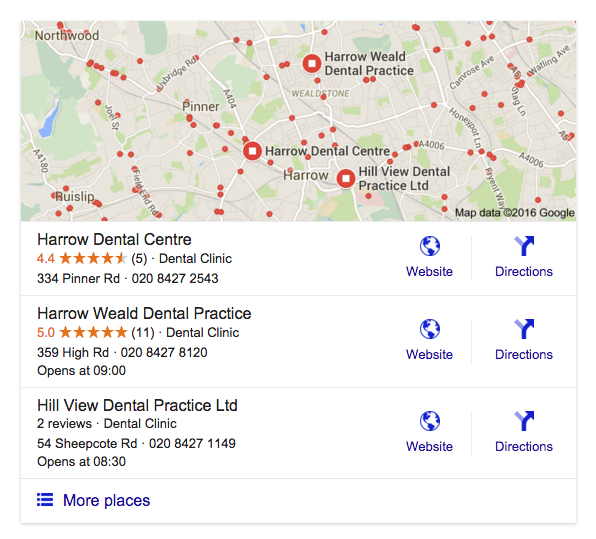
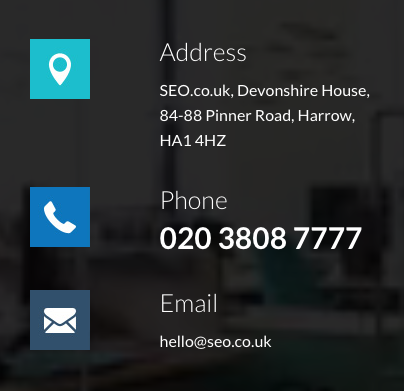
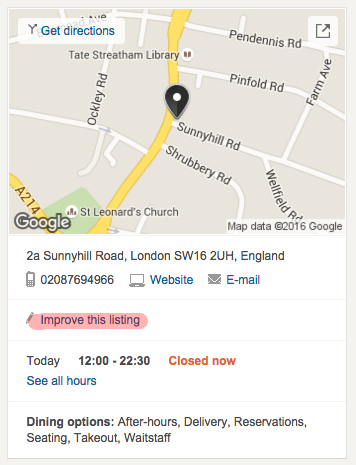
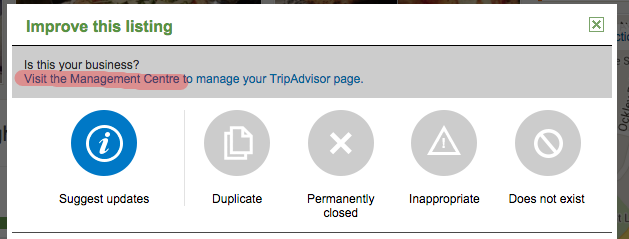

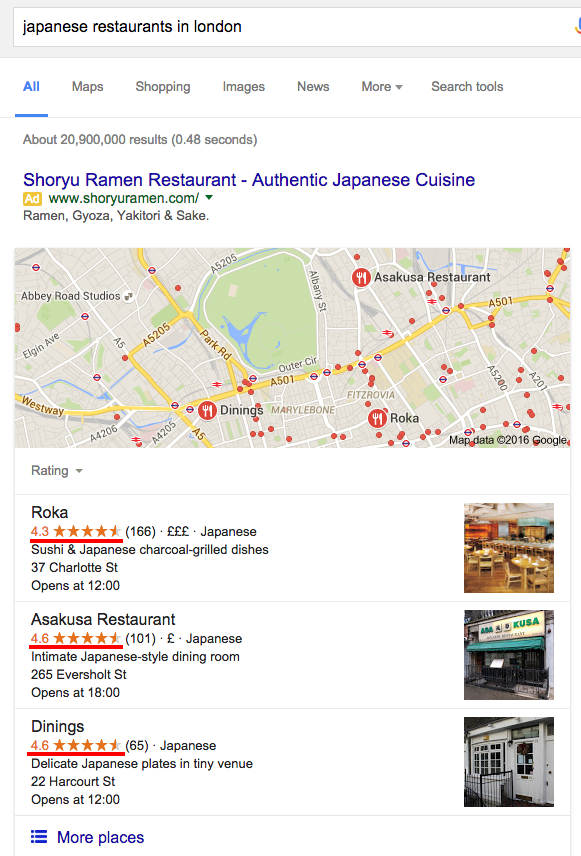

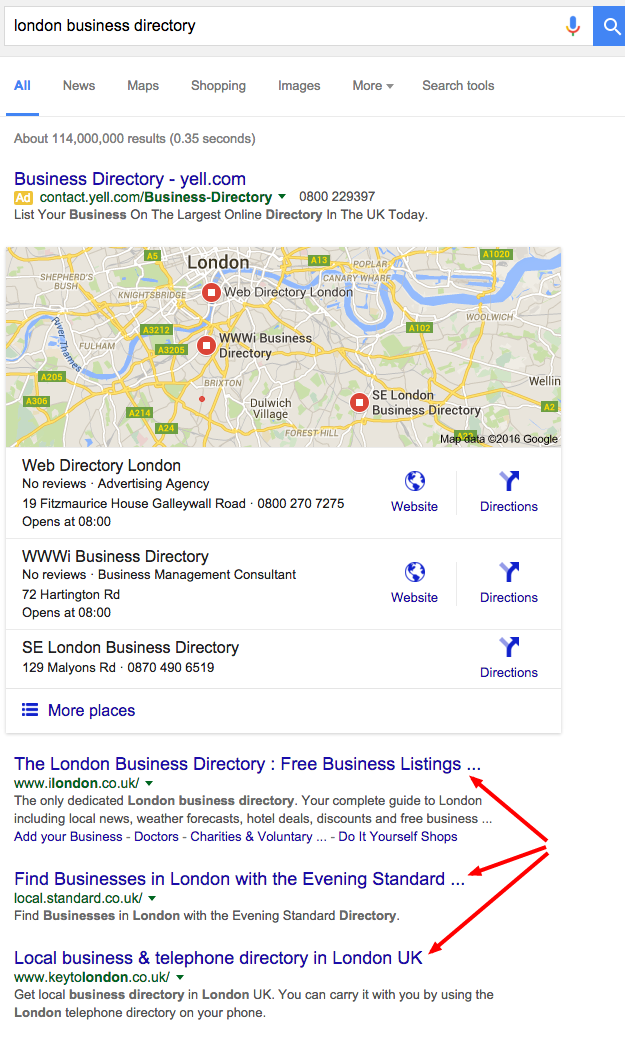
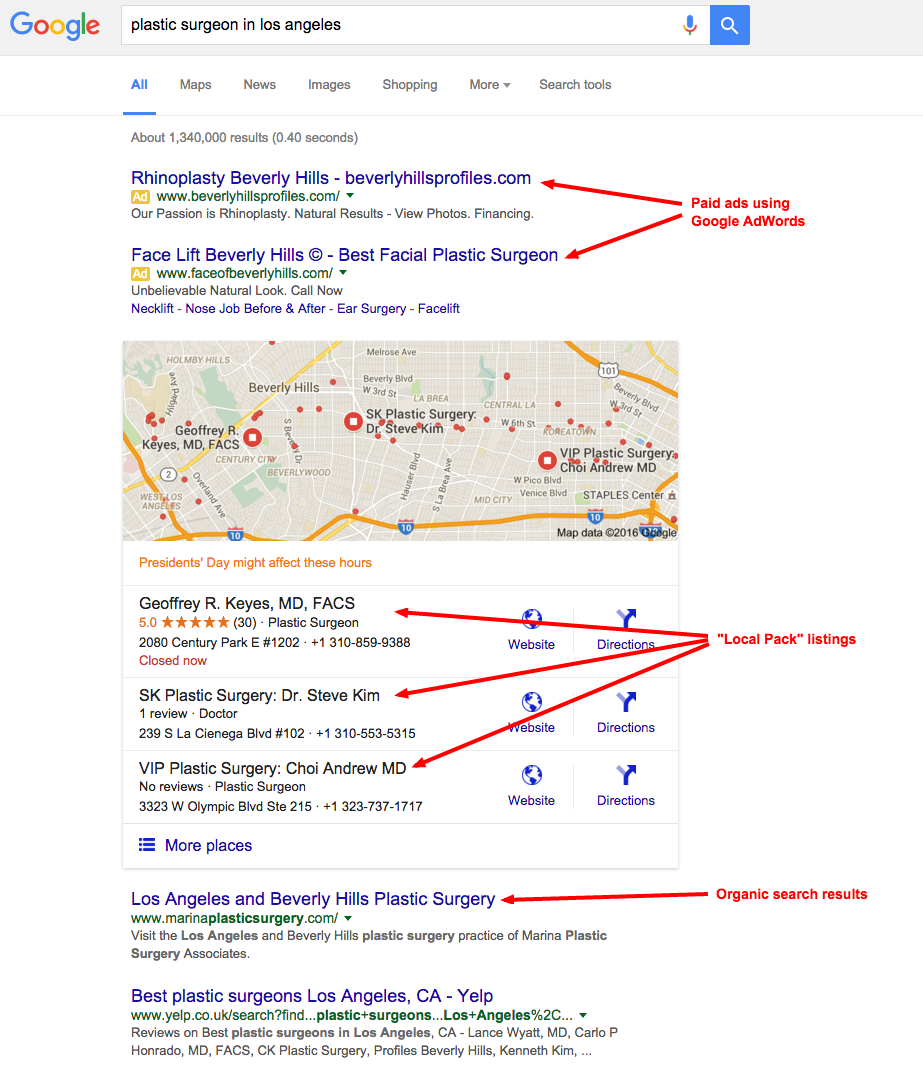
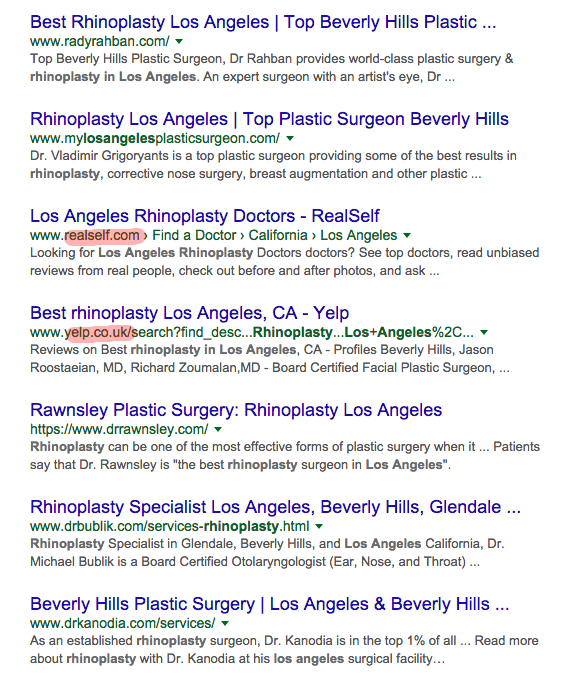
 (
( (
(
 Like us on Facebook
Like us on Facebook
 Follow us on Twitter
Follow us on Twitter
 Connect on LinkedIn
Connect on LinkedIn